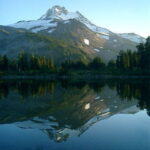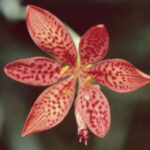Hazelnuts are native trees of North America. They are hardy in the United States department of Agriculture zones 4 through 9, although they can survive in zone 3 if they are growing in a sheltered location. You can find them growing in the United States from Maine to Oregon. Their rate of growth is medium to fast and when fully grown, they can reach a height of 8 to 18 feet, with a spread of 5 to 12 feet. Because they can live for 75 to 100 years, they work well when planted as part of a windbreak, or visual screen. The hazelnut tree has a rounded shape. In Turkey and southern Europe, hazelnuts are grown as a bush or multi-stemmed tree, but in the United States, they are grown as a single trunk tree.
In order for hazelnuts to produce nuts, they must be cross-pollinated. This means that you will need to plant two or more varieties planting them 20 to 35 feet apart. It can take 4 years before your tree produces any nuts. When the hazelnuts set on, they grow in clusters of 2 to 6 nuts. The tree blooms in mid-winter to early spring. When the trees bloom, you can determine which ones are female and which are the males. The female will have red flowers, while the male’s florets are a yellowish brown.
Location
Find a location that receives full sun, to part shade. The soil should be well draining with a pH balance between 6 and 7.
Remove vegetation in a 5-foot diameter circle. Take your spade, and in the center of the cleared area, dig a hole. It should be double the width of the root ball and 3 inches deeper than the length of the rootball.
I always like to fill the planting hole with water before I plant any tree. this ensures that there is ample moisture deep in the soil. Allow the water to drain away. This may take an hour or two.
Amend the Soil
Amend the soil you removed from the planting hole, by mixing equal amounts of soil and compost together. Because hazelnut trees are shallow-rooted, you need to make sure that the tree receives enough moisture to survive. Compost also helps to improve drainage so the tree’s roots aren’t continually growing in soggy dirt.
After the water has drained away in the hole, put about 4 inches of amended soil at the bottom. The hole should be filled 2/3 full of amended soil.
Planting the Hazelnut Tree
Remove the hazelnut tree from the container, being careful so you don’t break the soil around the roots. If the container won’t come off easily, cut it with a sharp knife. Don’t cut too deep, or you will damage the roots.
Inspect the rootball for damaged or diseased roots and trim them away. If the roots are visibly growing around the outside of the rootball, gently tease them away with your fingers. Insert the rootball in the center of the planting hole. Check to make sure that the top of the rootball is a 1/4 to 1/2 inch above soil level. The soil below the rootball will settle, bringing the rootball to ground level. If you need to, adjust the soil beneath the rootball by adding or removing some until you have it right.
Check to see that the tree is straight and centered. Fill in the hole with amended soil, tamping the soil with your hands as you go. This helps to remove air pockets in the soil.
Watering
Water your hazelnut tree thoroughly. For the first year or until your tree is established, you will need to water this tree once or twice a week.
Mulching
Add a 2 to 4 inch layer of organic mulch over the soil around your tree. Don’t put the mulch against the bark of your tree; keep it 1.5 to 2 inches away. When the mulch is against the tree’s bark, it invites disease and insects to your tree.
Pests
Check the hazelnut trees for eastern filbert or eastern filbert blight disease. Watch for bud mites. These insects feed inside the bud, destroying shoots and flowers. There are sprays that will help rid the trees of these pests or diseases. Check with the local greenhouse or your county extension agent for the best one to use in your area.
Sources:
Hazelnut Nursery Propagators: Planting & Growing Hazelnuts
Extension Ontario Notes: Planting and Caring For Nut Trees
Badgersett: Establishing New Plantings




